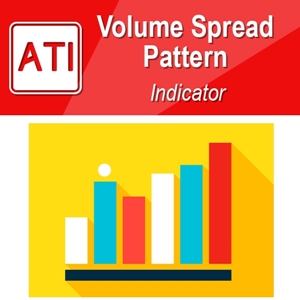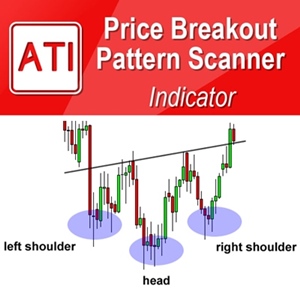Below is the Text Summar From the Full PDF Article:
1. Introduction to Equilibrium Fractal Wave
The concept of Equilibrium Fractal Wave was first introduced in the book: Financial Trading with Five Regularities of Nature: Scientific Guide to Price Action and Pattern Trading (Seo, 2017). At that time, the book was written for the pure motivation to identify the important market dynamics for financial traders. The concept of Equilibrium Fractal Wave was born by combining two scientific areas including time series and fractal analysis. The main propositions in the Equilibrium Fractal Wave include:
1. The separate or combined analysis of trend and Fractal wave is possible.
2. The repeating patterns in Equilibrium Fractal Wave are equivalent to the infinite number of distinctive cycles because the scale of the repeating pattern varies infinitely.
3. Equilibrium Fractal Wave is just a superclass of all the periodic wave patterns we know.
First, let us demonstrate the equilibrium fractal wave for readers. The easiest way to demonstrate the equilibrium fractal wave is through the pattern table presented in Figure 1 (Seo, 2017). Many applied researchers in time series and statistics will agree that patterns in the column 1, 2, 3 and 4, from first regularity to fourth regularity, are the mainly extracted features and patterns in their everyday research and operation. It is also agreeable that cyclic wave pattern can co-present with trend together. This concept is the main assumption behind the classic decomposition theory in the time series analysis. In the time series pattern table created by Gardner in 1987 (Figure 2) represents this concept clearly. The first row in the pattern table (Figure 1) shows the data in which no trend or weak trend exists. The second, third and fourth rows shows the co-existence of trend and waves.
Until now, many forecasting or industrial scientists use such concept to build forecasting models. Likewise, there are many applied software to create the forecasting or prediction model of this kind. Some example forecasting software with such modelling capability includes:
1. Stata (www.stata.com)
2. Eviews (www.eviews.com)
3. IBM SPSS (www.ibm.com/products/spss-statistics)
4. SAS (www.sas.com)
5. MatLab (www.mathworks.com)
6. And many others
Figure 1: Five Regularities and their sub price patterns with inclining trends. Each pattern can be referenced using their row and column number. For example, exponential trend pattern in the third row and first column can be referenced as Pattern (3, 1) in this table.
Figure 2: The original Gardner’s table to visualize the characteristics of different time series data (Gardner, 1987, p175). Gardner assumed the three components including randomness, trend and seasonality in this table.
Now the fifth column in Figure 1 presents the equilibrium fractal wave. This is extended part from the original Gardner’s table. When we list the equilibrium fractal wave in the fifth column, we can see that the pattern table (Figure 1) shows a systematic pattern. From left column to right column, we can see that the number of distinctive cycles in the data increases. For example, we can assume the pure trend does not have any periodic cycle. Therefore, number of the distinctive cycle is zero for pure trend series. Under the second and third columns, we can have one to several distinctive cycles depending on if the series follows daily, monthly, and yearly cycles. Under fourth column, we can have many more distinctive cycles outside daily, monthly and yearly cycles but the number of the cycles is finite. Fourier analysis or principal component method can be used to reveal the number of cycles for any series under column 4. From column 1 to column 4, you might be following this systemic pattern pretty well.
However, you might question why equilibrium fractal wave in column 5 possesses such infinite number of distinctive cycles. This is indeed the right question to ask. To understand this, you have to understand the fractal wave first.
A lot of research on fractal analysis was done by B. Mandelbrot (1924-2010). The Book: fractal geometry of nature (Kirkby, 1983) describes the nature of fractal geometries in scientific language. What is the difference between fractal wave and equilibrium fractal wave in this article? Fractal wave views a series as the subject of fractal analysis. Equilibrium Fractal wave views a series as the co-subject of fractal analysis and trend analysis. Hence, equilibrium fractal wave believes co-existence of trend and wave pattern in a single data series. The significance of equilibrium fractal wave is that we can model the trend and fractal wave in two separate steps or in one-step.
Indeed, scientists use the two-step process to model the data in column 2, 3 and 4 in economic and financial research. For example, price series under column 4 can be modelled with trend in the first step. Then the reminding data can be modelled using cycles in the second step. Likewise, for a data series under column 5, we can model a trend part first, then we can model a fractal wave patterns in separate steps. This explains the Proposition 1. This also imposes the fractal analysis under non-stationary condition when the trend component is strong in the data series. In this case, two-step modelling process might be advantageous. When the trend component is less dominating comparing to fractal wave component, the entire price series can be modelled using fractal analysis only. Proposition 1 states that the choice on the modelling process, either one-step or two-steps, is conditional upon the characteristics of the price series.
In the Book: fractal geometry of nature (Kirkby, 1983), the main characteristics of fractal wave is described as the repeating patterns in varying scales. To give you some idea of repeating patterns in varying scales, we can create a synthetic data like that using Weierstrass function. This function is famous for being continuous everywhere but non-differentiable nowhere among the math community. Of course, real world data will never look like this. However, this synthetic data describe what is repeating pattern in varying scale very well for our readers in Figure 3. You will see the same patterns everywhere in the data. Small pattern are combined to become the bigger pattern. The resulting bigger patterns look the same like small patterns. As the combing process continues, the size of the pattern can increase infinitely. This is referred to as repeating patterns in varying scale or varying size. This is the core assumption on any fractal analysis.




